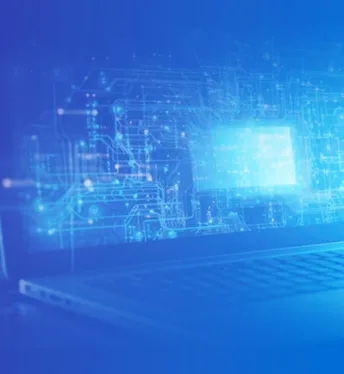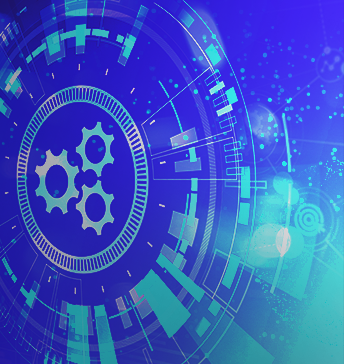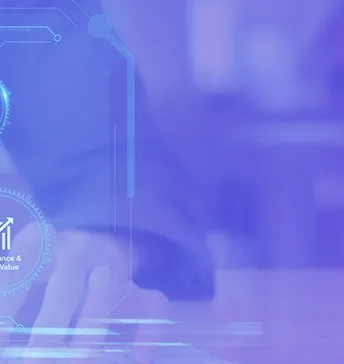Today organizations of all sizes rely heavily on digital technologies to operate. From storing sensitive customer data to managing critical operations online, dependence on digital creates a large attack surface for cybercriminals. Attackers employ increasingly sophisticated tactics and the cost of these cyberattacks for businesses is staggering, resulting in billions of dollars lost annually due to data breaches, operational disruptions, and reputational damage.
Earlier this year, Change Healthcare, which is owned by UnitedHealth Group, experienced a ransomware attack that resulted in the nationwide disruption of prescription drugs delivery and a $22 million dollar ransom payment.
This is why enterprise cybersecurity exists.
Enterprise cybersecurity protects your organization’s data, systems, and networks from cyber threats. A comprehensive set of practices, tools, and technologies, enterprise cybersecurity is designed to safeguard your business from malicious actors and keep critical operations running smoothly. By prioritizing a strong cybersecurity posture, businesses can mitigate risks, ensure compliance with industry regulations, and build trust with customers.
What is enterprise cybersecurity?
Enterprise cybersecurity is the comprehensive set of practices, tools, and technologies designed to protect a business’s data, systems, and networks from cyber threats. It’s the digital armor that safeguards an organization from malicious actors.
A physical business might have security guards, alarms, and secure storage areas to protect its assets. Enterprise cybersecurity is the digital equivalent, employing a layered approach to defend against cyberattacks, data breaches, and other online threats. It includes various elements such as:
- Vulnerability management: Regularly identifying and patching weaknesses in systems and software.
- Access control: Restricting access to sensitive data and systems based on user roles and needs.
- Data security: Encrypting sensitive data to ensure confidentiality at rest and in transit.
- Network security: Utilizing firewalls, intrusion detection systems, and other tools to monitor for suspicious activity and block potential threats.
- User education and awareness: Training employees on cybersecurity best practices to identify phishing attempts, create strong passwords, and avoid risky online behavior.
- Incident response: Having a plan to detect, respond to, and recover from cyberattacks effectively.
Why is Enterprise Cybersecurity important?
Enterprise cybersecurity is crucial for businesses and organizations of all sizes for several key reasons:
- Protecting Sensitive Data: Businesses store a wealth of valuable information, from customer records and financial data to intellectual property. Cybercriminals target this data for various purposes, such as financial gain or identity theft. Strong cybersecurity safeguards this sensitive information and minimizes the risk of data breaches that can have devastating consequences.
- Maintaining Business Continuity: A successful cyberattack can cripple a business. Malware infections can disrupt operations, ransomware attacks can lock down critical systems, and data breaches can damage customer trust and lead to lost revenue. Enterprise cybersecurity helps prevent these disruptions and ensures your business can continue to operate smoothly, minimizing downtime and financial losses.
- Ensuring Compliance with Regulations: Many industries have specific regulations regarding data security. For example, healthcare providers must comply with HIPAA (Health Insurance Portability and Accountability Act), and financial institutions must adhere to PCI DSS (Payment Card Industry Data Security Standard). A strong cybersecurity posture helps businesses meet these regulatory requirements and avoid hefty fines for non-compliance.
- Building Trust with Customers: Consumers are increasingly concerned about data privacy. By demonstrating a commitment to enterprise cybersecurity, businesses build trust with their customers and show they are taking steps to protect their information. This can lead to increased customer loyalty and brand reputation.
- Mitigating Financial Impact: Cyberattacks are expensive. The cost of data breaches, lost productivity, and reputational damage can be significant. Investing in a strong cybersecurity strategy helps minimize these financial losses and protects your business’s bottom line.
Enterprise cybersecurity is an investment in the future of your business. By proactively safeguarding your data and systems, you can ensure smooth operations, maintain customer trust, and achieve long-term success.
Common Threats to Enterprise Cybersecurity
New cyber threats emerge all the time. It’s important for organizations to have a comprehensive cybersecurity strategy that can adapt to changing risks and protect their valuable assets. The digital landscape is a battlefield, and cybercriminals are constantly developing new tactics. Here are some of the most common threats faced:
- Malware: This malicious software encompasses a wide range of threats, including viruses, ransomware, spyware, and worms. Malware can infect devices and networks, steal data, disrupt operations, and cause significant damage.
- Phishing Attacks: These deceptive emails or websites attempt to trick employees into revealing sensitive information or clicking on malicious links. Phishing attacks are a major threat because they prey on human error and can be very convincing.
- Data Breaches: Hackers gain unauthorized access to sensitive data, often through vulnerabilities in systems and software. Data breaches can expose customer information, financial records, intellectual property, and other confidential data.
- Denial-of-Service (DoS) Attacks: These attacks overwhelm a website or server with traffic, making it inaccessible to legitimate users and disrupting business operations. DoS attacks can be launched from a single source or involve coordinated attacks from multiple devices (DDoS – Distributed Denial-of-Service).
- Advanced Persistent Threats (APTs): These sophisticated, targeted attacks aim to gain long-term access to a network for espionage or sabotage. APTs are often highly customized and difficult to detect, as attackers employ various techniques to remain hidden for extended periods.
Key Components of an Enterprise Cybersecurity Strategy
Today, a well-fortified defense is essential for businesses. An enterprise cybersecurity strategy acts as your digital armor, employing a layered approach to combat threats. Here are some key components to consider when building your cybersecurity strategy:
1. Vulnerability Management: Just like patching holes in your physical building, this involves regularly assessing your systems and software for weaknesses (vulnerabilities) and promptly installing updates or patches to address them. This minimizes the risk of attackers exploiting these vulnerabilities to gain access to your network.
2. Access Control: Not everyone needs access to everything. Implementing strong access control measures restricts access to sensitive data and systems based on the principle of least privilege. This means users only have access to the information and resources they need to perform their jobs, reducing the attack surface for potential breaches.
3. Data Security: Sensitive data like customer records and financial information needs an extra layer of protection. Encryption scrambles data, making it unreadable by unauthorized users even if it’s intercepted. This ensures data confidentiality both at rest (stored on devices) and in transit (being transmitted over a network).
4. Network Security: Your network is the gateway to your digital assets. Firewalls act as the first line of defense, filtering incoming and outgoing traffic and blocking suspicious activity. Intrusion detection and prevention systems (IDS/IPS) continuously monitor your network for malicious activity and can take steps to quarantine threats or prevent attacks altogether.
5. User Education & Awareness: Even the most robust technology can be compromised by human error. Regular training programs can educate employees on cybersecurity best practices like identifying phishing attempts, creating strong passwords, and avoiding risky online behavior. Empowered employees become a vital line of defense against cyber threats.
6. Incident Response: Cyberattacks are a reality, so having a plan in place is crucial. An incident response plan outlines roles and responsibilities, communication procedures, and recovery steps in case of a cyberattack. This enables a swift and effective response to minimize damage and downtime.
By implementing these key components and staying vigilant, you can build a robust enterprise cybersecurity strategy that protects your valuable data and systems, mitigates risks, and ensures the smooth operation of your business.
Benefits of a Strong Enterprise Cybersecurity Posture
A strong enterprise cybersecurity posture is no longer a luxury, it’s a necessity. Here are some of the key benefits businesses can reap by investing in robust cybersecurity measures:
- Minimized Risk of Attacks: A comprehensive cybersecurity strategy that addresses vulnerabilities, implements access controls, and utilizes security tools significantly reduces the likelihood of successful cyberattacks. This translates to fewer data breaches, malware infections, and other security incidents that can disrupt operations and damage your business.
- Enhanced Data Protection: Strong cybersecurity safeguards sensitive customer information, intellectual property, and financial data. By encrypting data and implementing access controls, you minimize the risk of unauthorized access and ensure compliance with data privacy regulations, protecting your business from hefty fines.
- Reduced Financial Impact: Cyberattacks are expensive. The cost of data breaches, lost productivity, system downtime, and reputational damage can be significant. A strong cybersecurity posture acts as a financial shield, minimizing these losses and protecting your bottom line.
- Business Continuity: Cyberattacks can cripple a business by disrupting operations, locking down systems, and causing data loss. A robust cybersecurity strategy helps prevent these disruptions and ensures your business can continue to function smoothly, minimizing downtime and lost revenue.
- Improved Customer Trust: Consumers are increasingly concerned about data privacy. By demonstrating a commitment to enterprise cybersecurity, businesses build trust with their customers. This can lead to increased customer loyalty, brand reputation, and potentially a competitive advantage.
- Enhanced Credibility & Partnerships: Strong cybersecurity practices are becoming a key factor for businesses looking to collaborate with other organizations. Demonstrating a commitment to data security can open doors to new partnerships and business opportunities.
Emerging Trends in Enterprise Cybersecurity
The cyber threat landscape is constantly evolving, and so are the strategies employed to combat it. Here are some emerging trends in enterprise cybersecurity that businesses should be aware of:
Artificial Intelligence (AI) and Machine Learning (ML): The rise of AI and ML is revolutionizing cybersecurity. Businesses are leveraging these technologies for threat detection and analysis. AI and ML can sift through vast amounts of data to identify anomalies, predict potential attacks, and automate incident response, allowing security teams to focus on higher-level tasks.
Cloud Security: As more businesses migrate data and applications to the cloud, securing these cloud environments becomes paramount. Cloud security solutions focus on protecting data privacy, ensuring compliance with regulations, and mitigating risks associated with shared cloud infrastructure.
Zero Trust Security: The traditional perimeter-based security model is giving way to a Zero Trust approach. Zero Trust assumes no user or device is inherently trustworthy and requires continuous verification throughout a session. This approach minimizes the attack surface and reduces the potential damage caused by breaches.
Internet of Things (IoT) Security: The proliferation of connected devices within organizations (IoT) creates new security challenges. Businesses need to implement robust security measures to manage and protect these devices from potential vulnerabilities that could be exploited by attackers to gain access to the network.
Focus on User Behavior: Security awareness training for employees remains crucial, but the focus is shifting towards understanding and influencing user behavior. By analyzing user activity patterns and identifying risky behaviors, organizations can proactively address potential vulnerabilities and prevent breaches caused by human error.
Evolving Regulatory Landscape: Data privacy regulations are becoming stricter and more widespread globally. Businesses need to stay up to date on evolving regulations and ensure their cybersecurity practices comply with these requirements to avoid hefty fines and reputational damage.
Cybersecurity Mesh Architecture: This emerging concept focuses on securing the connections between different devices, users, and applications, regardless of location. A cybersecurity mesh provides a more dynamic and scalable approach to security in distributed IT environments.
A fundamental requirement
Enterprise cybersecurity is a fundamental requirement for protecting your organization’s data, systems, and ultimately, the business itself. Building a comprehensive cybersecurity strategy is crucial for mitigating risks, ensuring compliance with regulations, and fostering trust with your customers.
Fortunately, resources are available to help you on this journey. From industry best practices guides to cutting-edge security solutions, you can find the tools and expertise necessary to build a robust defense.
At Stefanini, we offer a comprehensive suite of enterprise cybersecurity solutions designed to meet the unique needs of your business. We can help you assess your current security posture, identify vulnerabilities, and implement a customized strategy that protects your valuable assets and keeps your business running smoothly. Contact us today for a consultation.




















